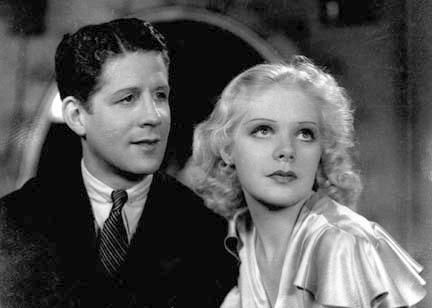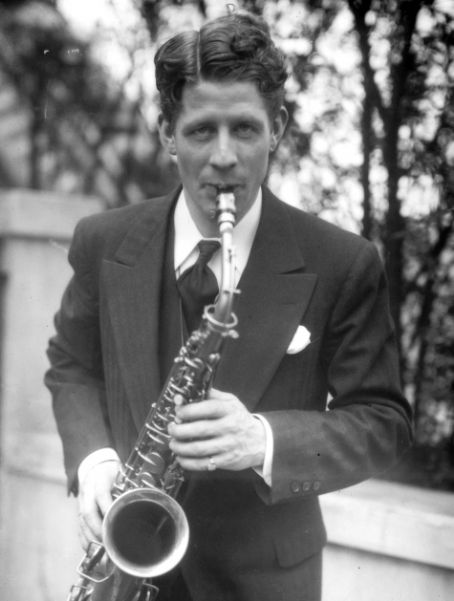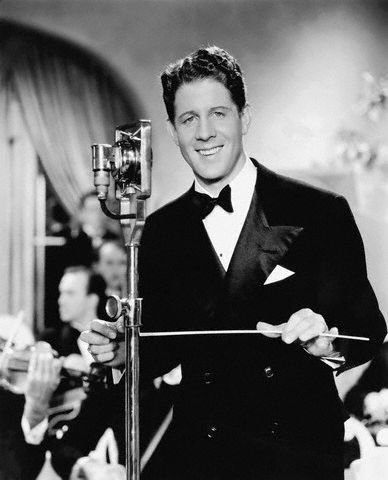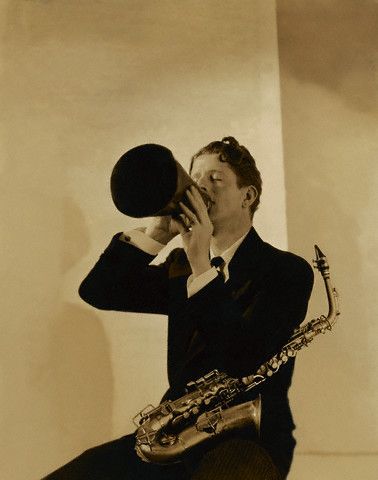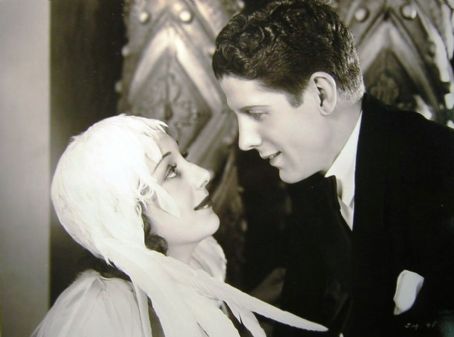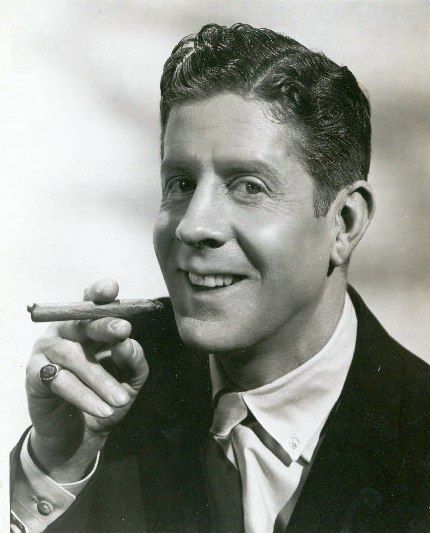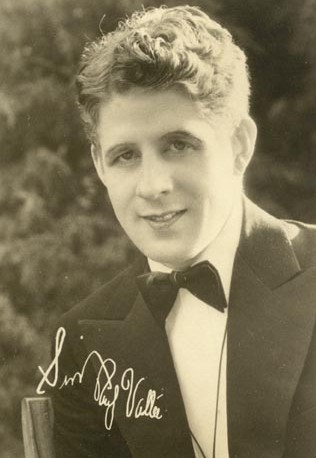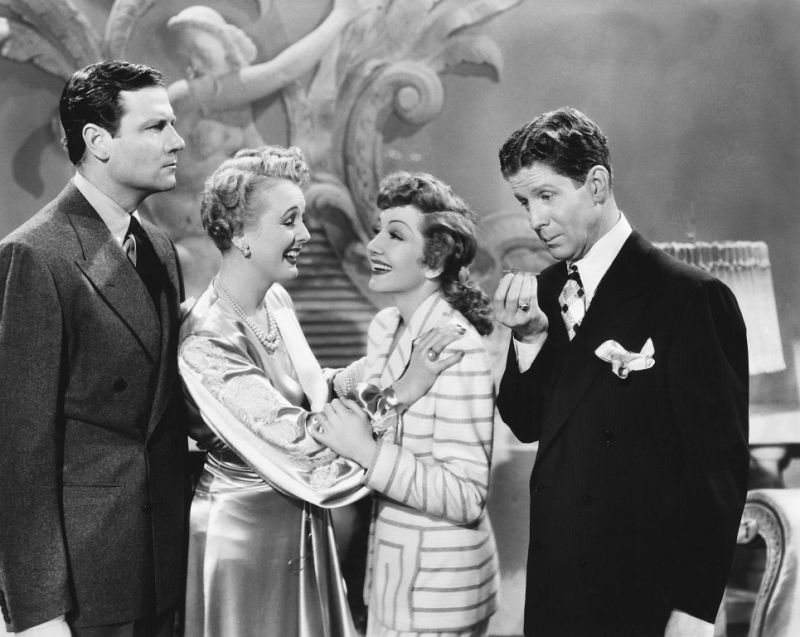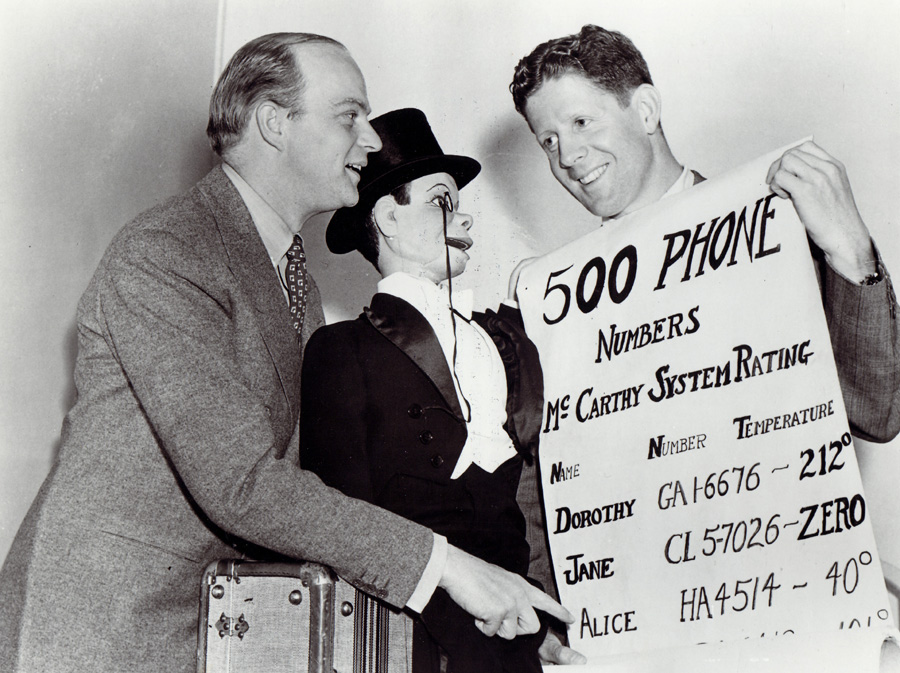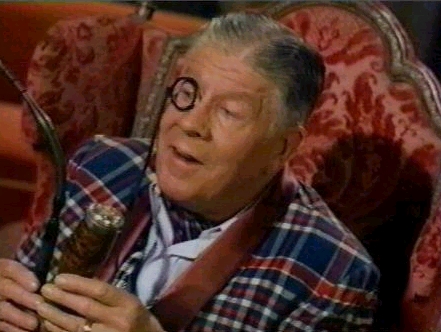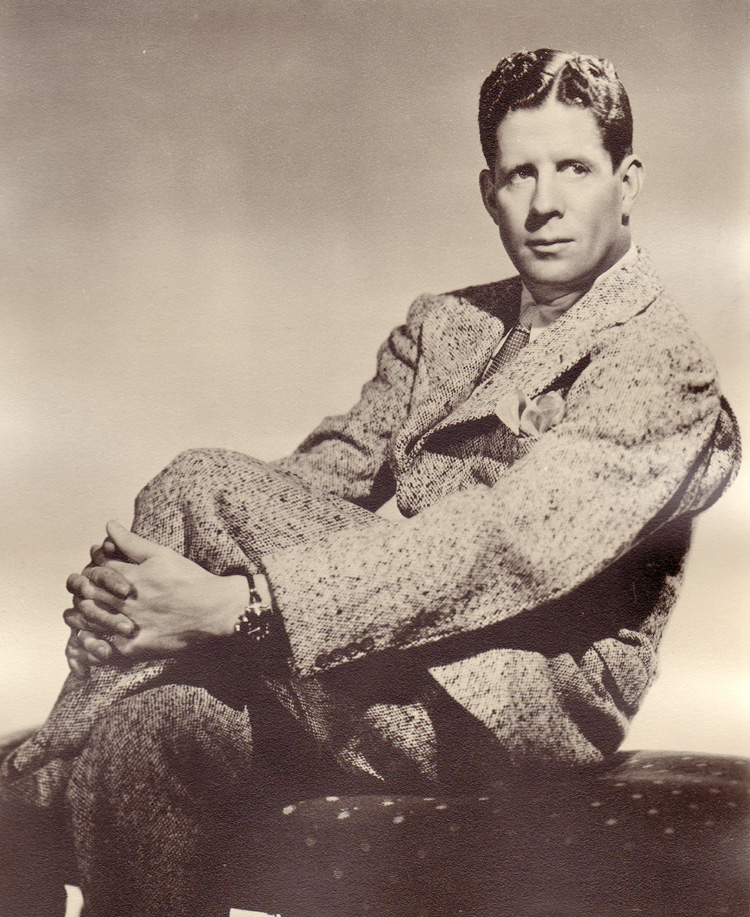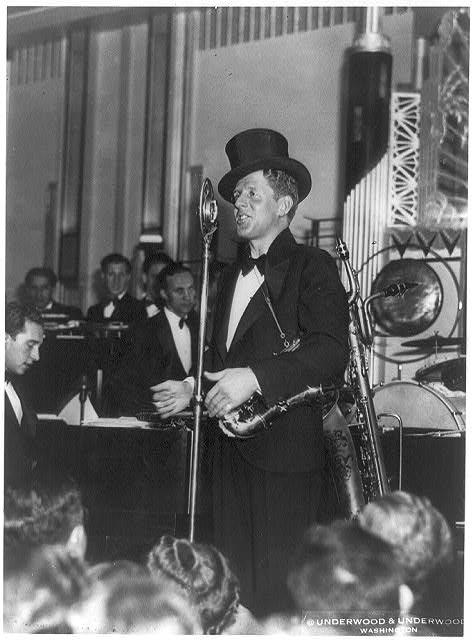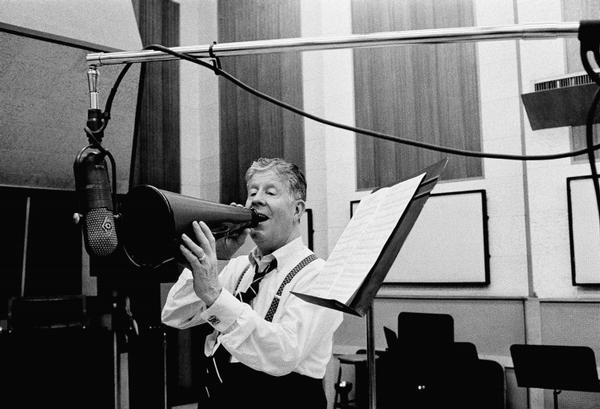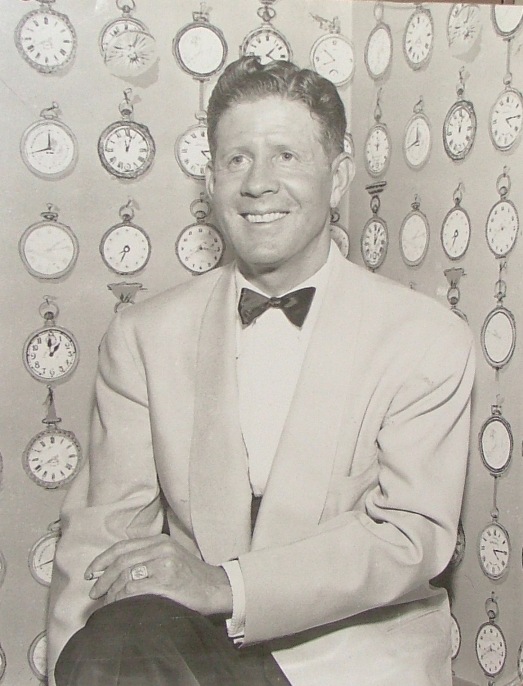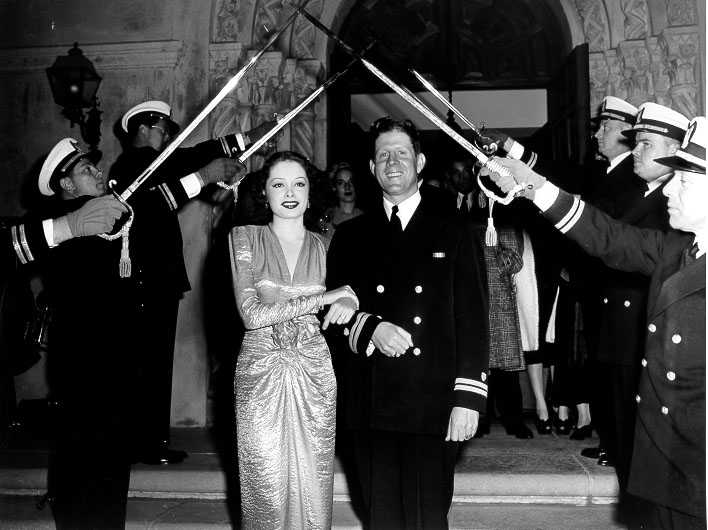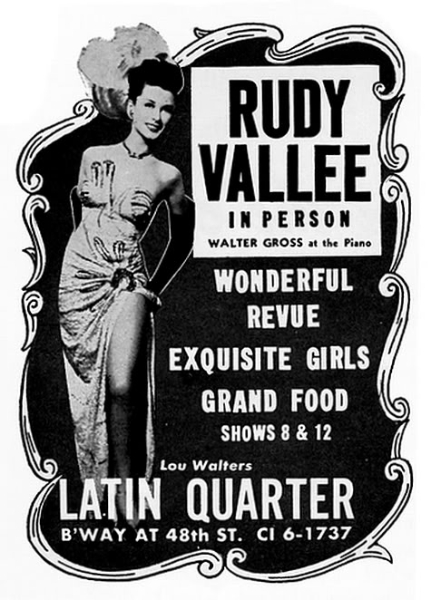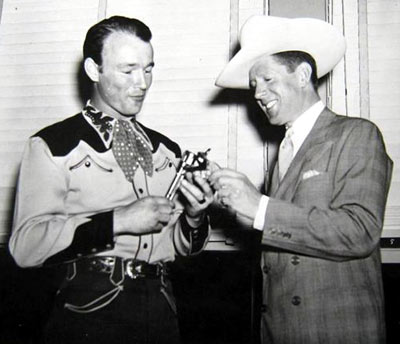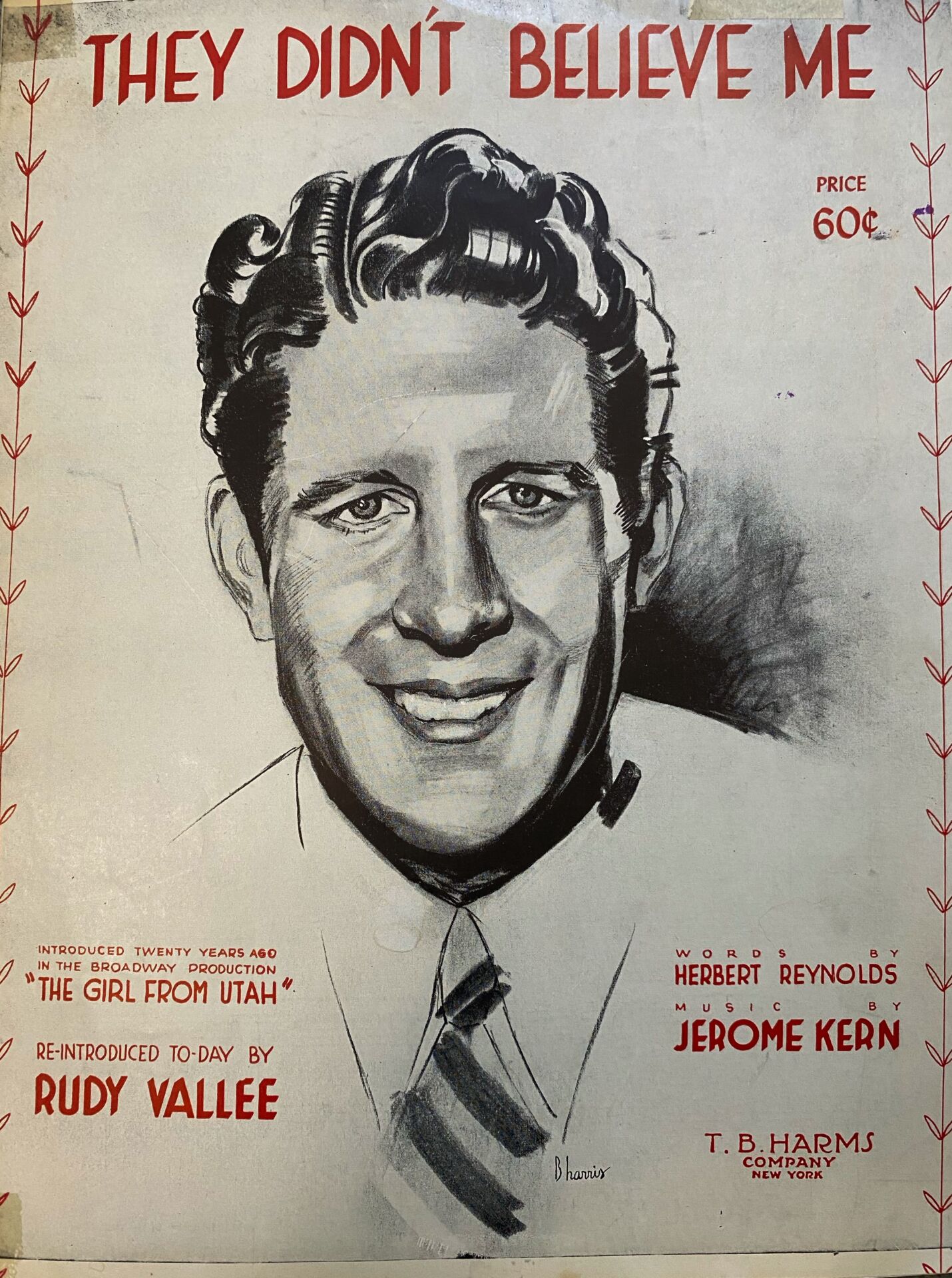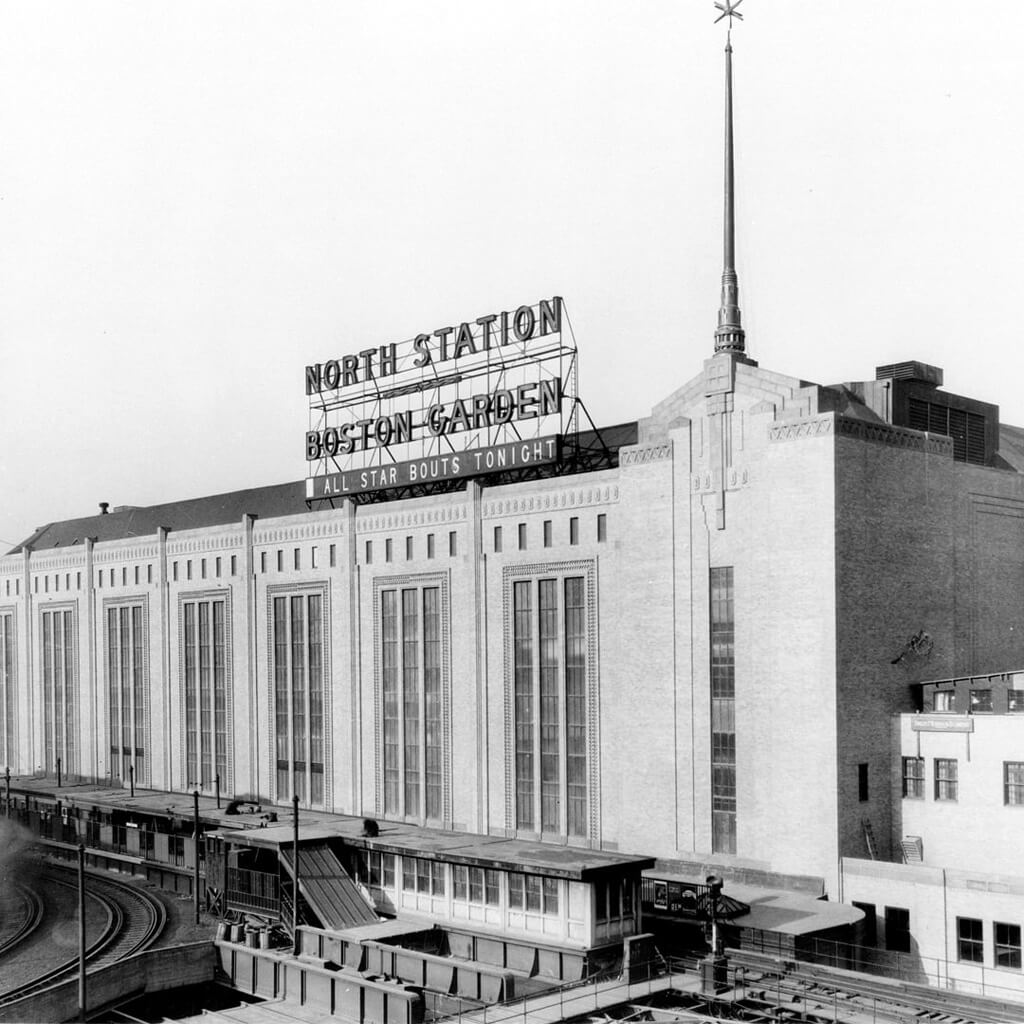Rudy Vallée

While the terms “crooner” and “teen idol” are accurate descriptions of Rudy Vallée, both fall light years short of encompassing the astronomic scope of his talents, accomplishments and influence on other performers during the first half of the 20th century. A multi-instrumentalist with a philosophy degree from Yale, Vallée was a creative maverick across the entertainment field – from stage, radio and recording to film, television and production – and left a breathtaking legacy of decades-long show-biz success.
With trombone-like phrasing on which future stars like Bing Crosby, Frank Sinatra and Perry Como would model their own vocal styles, Vallée used a megaphone in the pre-mic 1920s to project his thin, wavering voice which – combined with his impeccable fashion sense and boyish good looks – suited tender ballads to a tee. A perfectionist known to musicians as much for his foul-mouthed outbursts and tirades during rehearsals as for his artistic genius, Vallée was the consummate romantic figure on the radio, on stage and on film, with a remarkable knack for creating an intimate atmosphere no matter how many millions happened to be listening or watching.
Musical beginnings, Military service, Education
Born Hubert Prior Vallée on July 28, 1901, in Island Pond, Vermont, and raised in Westbrook, Maine, his first musical instrument was the drums, which he started playing at age four since he said they alleviated the pain of his frequent earaches. He took clarinet lessons in junior high, was a drummer in his high-school jazz band and started his show-biz career at age 16 as a part-time usher, janitor and hand-cranked projection-machine operator at a silent-movie house (a decade before The Jazz Singer became the first “talkie”).
In April 1917, when the US entered World War I, 15-year-old Vallée lied about his age to enlist in the Navy but was discharged after just 41 days of service when the Navy learned the truth. After teaching himself to play the saxophone in his senior year of high school, Vallée graduated in 1919 and worked as the head usher at a movie theatre in Portland. He played both clarinet and saxophone around New England in a local jazz orchestra before enrolling at the University of Maine, where he spent a year before transferring to Yale in 1923, graduating in 1928. While there, he formed the Yale Collegians Orchestra, a jazz ensemble, and he took a year off from his schooling between 1924 and 1925 to play clarinet and saxophone with the Savoy Havana Band at the famed Savoy Hotel in London.
Becoming “Rudy Vallée,” Heigh-Ho Club, Columbia signing
Upon graduation he took the stage name Rudy Vallée – after his musical hero, virtuoso saxophonist Rudy Wiedoeft – and formed Rudy Vallée and His Connecticut Yankees, an eight-piece ensemble with which he made his debut as a singer while playing saxophone, clarinet and occasionally drums. In 1928, after landing a regular gig at New York’s exclusive Heigh-Ho Club – which inspired his signature catch phrase, “Heigh-ho, everybody!”– Vallée signed with Columbia Records. Two of his first recordings reached the charts immediately, “Marie” (#42) and “Weary River” (#46). Vallée started performing live on the radio, first at New York station WABC and within a year on the NBC Red Network, which was one of only two nationwide broadcasters in the US at the time.
RCA Victor, The Fleishmann’s Yeast Hour, The Rudy Vallée Show
In 1929, Vallée left Columbia for RCA Victor and over the next two years the label released some of his best-charting songs including “The Stein Song” (#7, aka “The University of Maine School Song”), “Honey” (#8) and “Brother Can You Spare a Dime” (#3). That same year, he started hosting radio’s first-ever variety show, The Fleischmann’s Yeast Hour, which featured Vallée and His Connecticut Yankees plus appearances by future stars including the comedy duo Burns & Allen, comedian Edgar Bergen and actress-singer Frances Langford. During the 1930s and 1940s, Vallée hosted several other radio programs including The Rudy Vallée Show in 1946 and 1947.
Films, Broadway, Companies, Louis Armstrong friendship
In 1929, Vallée starred in his first feature film, The Vagabond Lover, and he went on to appear in 39 others over the next five decades, his last being The Perfect Woman in 1981. In the 1930s, he appeared on Broadway multiple times in the long-running revue “Scandals,” was president of the American Federation of Actors and founded two music-publishing companies and a talent agency.
In 1932, The Rudy Vallée Orchestra performed the first concert at Boston Garden, which had opened in 1928. He released a string of hits in the next decade on both Columbia and RCA Victor including “You Oughta Be in Pictures” (#34), “Vieni, Vieni” (#34), and “Let’s Put Out the Lights (#43), which was considered risqué at the time. Vallée wrote the introduction for Louis Armstrong’s autobiography Swing That Music in 1936 and in 1937, when Vallée took a vacation from his radio show, he insisted that Armstrong be his substitute, making him the first African-American to host a nationally broadcast program.
Coast Guard service, Casablanca, Vallée-Video, Tele-Comics
In 1942, shortly after the US entered World War II, Vallée enlisted in the US Coast Guard and directed the 40-piece 11th District Coast Guard Band at war-bond rallies until 1944, when he returned to radio. In 1943, Vallée had his last hit when a reissue of his 1931 recording of “As Time Goes By” charted at #11 after it was the theme song for the 1942 film Casablanca, and in 1948 the ever-entrepreneurial Vallée founded the production company Vallée-Video, which made short 16-mm films for television in which he appeared as himself. In 1949, the company released one of television’s first children’s cartoon shows, Tele-Comics.
1960s, 1970s, 1980s, Memorobilia collection
In 1960, Vallée was given a star on the Hollywood Walk of fame and in 1961 he performed on Broadway as the uber-pompous J.B. Biggley in the musical “How to Succeed in Business Without Really Trying,” which he reprised in the 1967 film version. In the late 1960s, he appeared in three episodes of the television show Batman as the villainous Lord Marmaduke Ffogg, followed by playing a vindictive surgeon in one episode of the NBC horror series Night Gallery in 1971. In the 1970s and 1980s, Vallée was almost as busy as he was in his younger years, playing occasional concerts – including as an opening act for The Village People several times – in addition to performing his two-hour, one-man show across the US – including once at the University of Maine in 1975 – and appearing in movies and plays.
Though he lived in Hollywood for over 40 years, Vallée kept an estate at Kezar Lake in Maine in which he kept memorabilia that would fetch who-knows-how-many-millions at auction. Items included megaphones he’d used, a collection of recordings from his radio shows, tapes of nightclub openings, all of his old radio scripts and a framed photo of himself at age 22 standing with Rudy Wiedoeft, the man who inspired his stage name.
Death, Legacy
On July 3, 1986, Vallée died three weeks before his 85th birthday and was buried in the town where he was raised, Westbrook, Maine. In a lengthy obituary, The Los Angeles Times characterized him as “a spirited, hospitable, garrulous man – an American original.” In 1995, he was honored with a Golden Palm Star on the Palm Springs Walk of Stars in California and in 2011 he was inducted into the Vermont Association of Broadcasters Hall of Fame.
(by D.S. Monahan)

